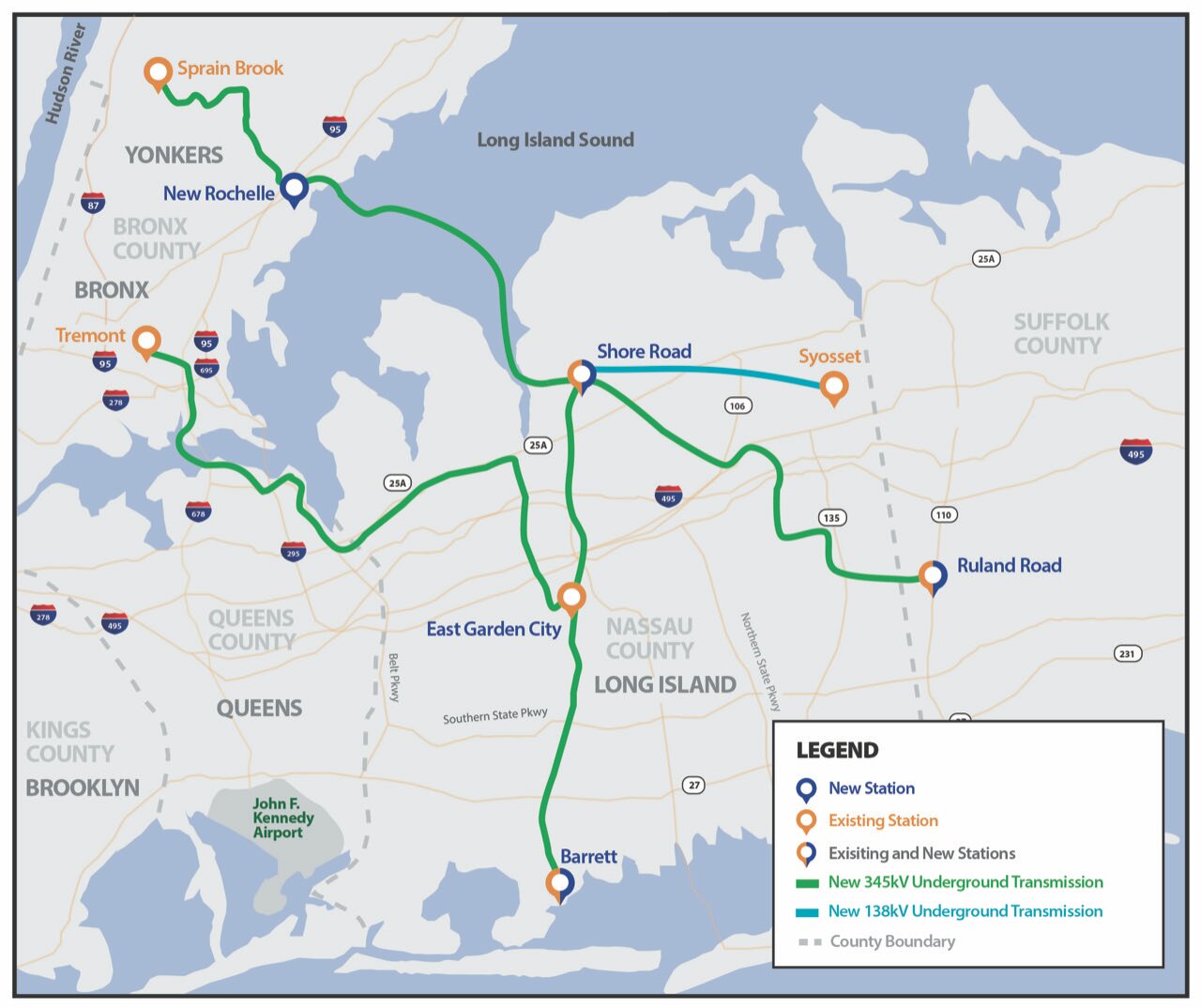Plans begin for electrical grid upgrade project
With a $3.26 billion investment, New York Transco and the New York Power Authority unveiled details of its Propel NY Energy project, aimed to fortify Long Island’s power grid by potentially bringing new underground electrical transmission and substations to Nassau County.
The Long Island Association’s offshore wind committee hosted a discussion last week in Melville, with topics ranging from electrical grid reliability improvements to potential traffic disruptions caused by the work to make it happen.
Propel NY represents a step toward a cleaner, more sustainable energy future for Nassau County and the wider region. After last year’s competitive bid process in 2023, the New York Independent System Operator — which monitors the reliability of the state’s power system — threw its support behind Propel NY, which is now entering the permitting process. Regulated by Article VII of the New York Public Service Law, the regulatory framework emphasizes environmental impacts, reaching out to the public, and ensuring community involvement and support.
“We want to make sure that we’re all working together … to make sure that effective outreach and communication is happening throughout the process,” said Carrie Gallagher, the Long Island office director for the state’s public service department. That means bringing together not only the Long Island Power Authority and PSEG Long Island, but also the public service department, Transco, and the power authority.
Propel NY aims to bolster the reliability and resiliency of the Long Island power grid, according to officials. That means adding what they are calling bi-directional power flows from Long Island into the statewide grid through 90 miles of new transmission pathways. The goal is to transmit up to 3,000 megawatts of energy from offshore wind projects that could power hundreds, if not thousands, of homes.
An estimated 64 miles of the new underground transmission lines will run across Nassau County, with less than two miles planned for Suffolk.
That includes several separate high-voltage cables from Melville, Oceanside, Syosset, Uniondale and Glenwood Landing in Oyster Bay that then would extend under the East River to the Bronx and the Long Island Sound toward Westchester. The bidirectional line — meaning power will flow in both directions — will help accommodate the influx of renewable energy from offshore wind farms, officials said, with construction expected to begin in 2026, continue on until mid-2030.
Residents, according to power authority vice president Girish Behal, will be “impacted the most by traffic and all the construction that happens. But, in addition to that, it’s also the local government and community groups that have an impact on the project.”
Propel NY got the go-ahead to begin groundwork needed for construction this past June. It remains important for them to stay in touch with neighbors, keeping them a part of the project discussions and decision-making processes throughout the permitting process, which begins this summer.
“We will be putting out a schedule for open houses,” Behal said. “We’ll be filing an Article VII and other permits, and all the stakeholders are invited to that open public process to provide their input, identify their concerns, and the ways we can mitigate them. It’s going to be a continuous engagement with local leadership, local boards, and the residents that are going to be impacted, and the businesses.”
The state’s Public Service Commission approved Transco’s plan to borrow as much as $1.4 billion to build power lines. Propel NY looks to harness various clean energy sources — particularly offshore wind — reducing reliance on fossil fuels and promoting sustainability, officials said.
A key purpose of the project, they add, is the need for upgrades to accommodate renewable energy sources like offshore wind, while discussing the current sources of electricity on Long Island and the transition toward offshore wind as a significant clean energy source.
“By 2030, 50 percent of our power will come from one source: offshore wind,” said Tom Falcone, the Long Island Power Authority’s chief executive. “Right now, it’s practically zero.”
Half of the 10 turbines already built are now operating, he said, with two more expected be added to the overall total by March.
At that time, “the first offshore wind project in federal waters will be operational,” Falcone said, “but it’s the first of thousands. And it’s coming very soon.”
The South Fork Wind Farm is a 130-megawatt offshore wind project 35 miles east of Montauk, and is the state’s first operational offshore wind farm, delivering the first amounts of power to the grid this past December.
“There’s 20 gigawatts of the stuff working in Europe,” Falcone said. “The technology is real. The resources are real. And costs work.
“It’s going to happen. Every project has its bumps, but there’s a lot of this stuff coming. And what this Propel project is about is to make sure the grid works.”







